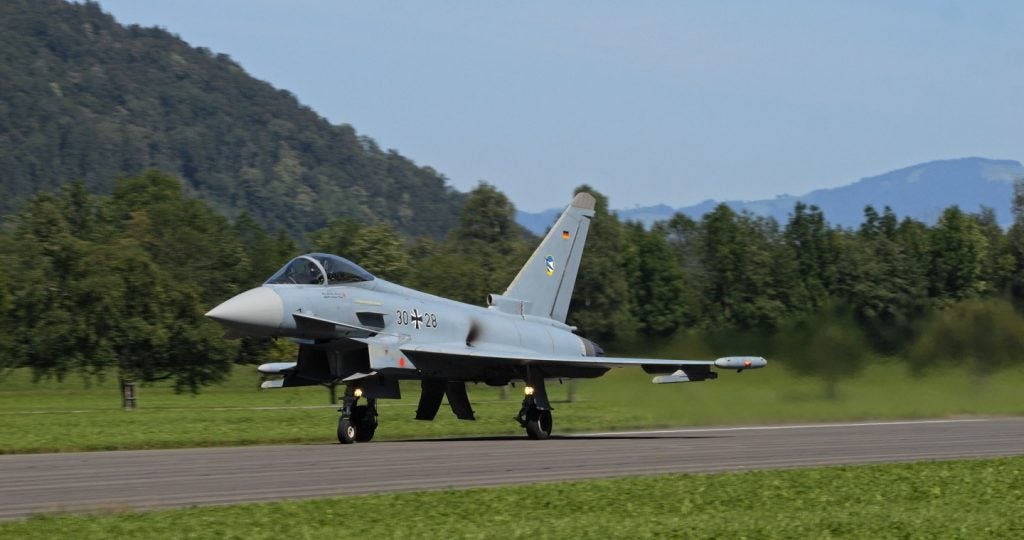
Hypersonic Weapons and the Challenges of Defense
In August, the US Air Force contracted Lockheed Martin to develop a hypersonic prototype weapon – the Air-Launched Rapid Response Weapon (ARRW), nicknamed ‘Arrow’. The for $480m deal is the second awarded to Lockheed Martin by the US Air Force; the company was also selected to design a prototype for the Hypersonic Conventional Strike Weapon (HCSW) – or ‘Hacksaw’ – in April.
But just what is a hypersonic weapon in the modern sense? ‘Hypersonic’ as a speed is defined as travelling at Mach 5 or above, but aircraft have been flying at hypersonic speeds for over 50 years, and many international militaries have had access to inter-continental ballistic missile (ICBM) technology since the 1960s.
“When we talk about hypersonic weapons today we are referring to two specific types,” explains George Nacouzi, senior engineer at research and analysis organisation RAND, “namely, hypersonic glide vehicles (HGV) and hypersonic cruise missiles (HCM). HGV are launched on a missile and released at high altitudes – about 40km or higher. Their initial speed and altitude allows them to maintain hypersonic speeds – they are not powered – while ‘gliding’ on top of the atmosphere to their target. They can manoeuvre during their trajectory making it difficult to predict their future location. HCM are cruise missiles that reach hypersonic speeds.”
An unstoppable force: bypassing defences with hypersonic weapons
Details of who currently has access to hypersonic weaponry are somewhat hazy due to the highly classified nature of the technology, but China, Russia and the US are all known to be developing prototypes in the area, with France also looking into developing hypersonic capabilities to underline its next-generation nuclear deterrent.
“News reports have indicated that China, and maybe Russia, may already be deploying, or will be soon, a hypersonic weapon,” says Nacouzi. “The US does not have any operational hypersonic weapons yet, but appears to have fast-tracked the development of these weapons. Several other countries have been researching hypersonic systems but many claim that they are only for civilian use.”
To see why these countries are interested in hypersonic weapon development, you only need look into the potential of hypersonics to bypass traditional missile defence systems. The overarching opinion is that current-generation point defence weaponry is entirely incapable of intercepting a hypersonic missile or glide vehicle.
How well do you really know your competitors?
Access the most comprehensive Company Profiles on the market, powered by GlobalData. Save hours of research. Gain competitive edge.

Thank you!
Your download email will arrive shortly
Not ready to buy yet? Download a free sample
We are confident about the unique quality of our Company Profiles. However, we want you to make the most beneficial decision for your business, so we offer a free sample that you can download by submitting the below form
By GlobalDataRoyal United Services Institute (RUSI) research fellow Justin Bronk explains that ballistic defence systems rely on the fact that the missiles, by their nature, follow a ballistic and therefore predictable trajectory. “Once you introduce a hypersonic glide vehicle-type payload, it becomes capable of changing direction quite significantly, and changing its flight path,” he adds. “You’re then looking at something that no longer follows a predictable path.
“It should also be mentioned though that apart from the unproven ground-based interceptor (GBI) system that is being developed at vast expense in the US, there is currently no capability to intercept even standard ICBMs, which is basically just a factor of the fact that they come in so fast.”
Bronk points out that in the US at least, current ICBM missile defence is focused on shooting down one or two ICBMs from a rogue nation such as North Korea or Iran, and US GBI systems would be incapable of defending against the scale of Russia or China’s strategic arsenals.
Destructive capability: hypersonic weapons’ kinetic potential
The pure destructive capability of these weapons must also be considered. Nuclear payloads can be placed on hypersonic missiles, meaning several countries will have access to nuclear arsenals that can easily bypass defence systems. But even if missiles don’t have a payload, the kinetic energy released on impact makes hypersonic weapons extremely destructive.
This makes them particularly dangerous to ships, says Bronk. “If you had a hypersonic missile directly hit a stern or a bow, then it goes straight through the ship. The Chinese DF-21D is designed basically as a carrier killer. Even without a warhead, if it were to come in at significantly above Mach 5 and manage to hit the deck of a supercarrier – it might not sink it, but it would certainly be a mission kill.”
That is not to say that hypersonic weapons have currently such a capability; targeting something as specific as a carrier is exceptionally complex, and much of the challenge of hypersonic missile development comes with actually controlling cruise missiles well enough to manage a sufficient degree of accuracy.
With hypersonic anti-ship missiles, for example, the heat difference between the top and bottom of the missile is so intense that the body actually changes shape in-flight. This subtle difference makes aerodynamic targeting incredibly difficult, and is one of the intricate, expensive challenges the US, Russia and China are trying to overcome.
Changing the game: hypersonic potential
Hypersonic weapon advancements have the potential to shake up the balance of power in aerial combat and warfare. According to Bronk there are concerns within the military and defence industries with technology such as advanced anti-stealth aircraft radar that defence is becoming overdeveloped compared to offence.
“But if you were to bring in, for example, hypersonic air-launch cruise missiles as a means of striking ground targets within a heavily defended airspace, you automatically move the balance of power back to favouring offence.”
Of course, if opponents also have access to hypersonic weaponry, it makes the situation much more complex. As Nacouzi puts it, “these future weapons will make it easier for opponents to successfully attack previously unreachable targets due to defences and range. Both the attack and defence time cycle will be compressed”.
Hypersonics have the capability of significantly change aerial warfare, but it’s unlikely this scenario will become a reality anytime soon. The extreme expense needed to develop and produce these weapons is a significant barrier to entry for the vast majority of countries around the world.
“Most countries are still desperately trying to catch up with where the US is, and have programmes focused on that for the next 15 years,” says Bronk. “I think this is one of these areas where there will be such a huge gap. It will remain a fairly niche capability in terms of countries that can afford to get into the game for a long time to come.”
And because of the highly classified nature of hypersonic weapon development, barring significant degradation of international relations, we’re unlikely to see any country boasting the operational potential of their hypersonic capability, as giving the game away would inevitably lead to prioritised efforts from rivals in anti-hypersonic-weapon defence research. For now, at least, hypersonics will remain a rich country’s war game.






